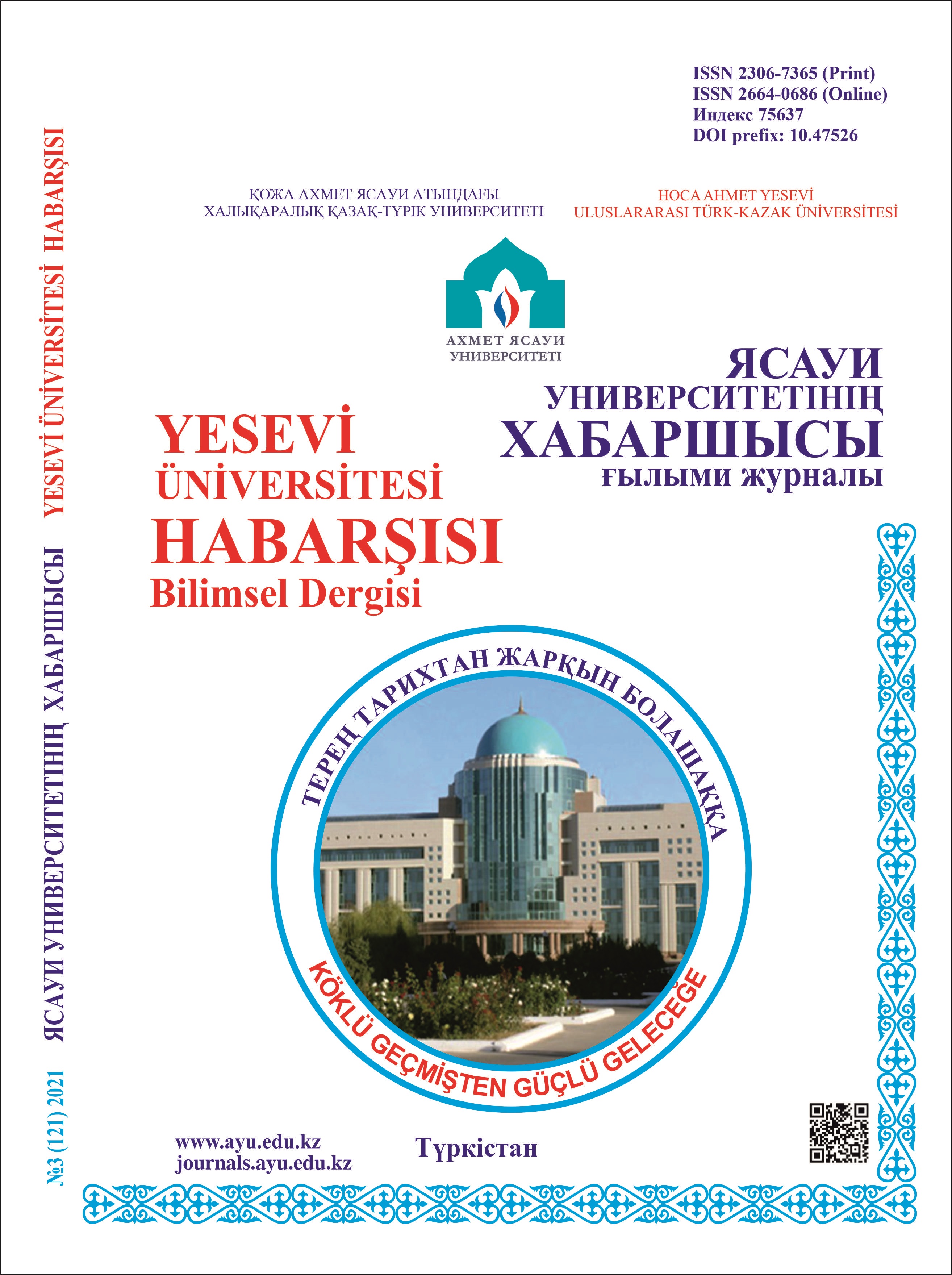A Phenomenologıcal Approach to Hajj Worshıp ın Islam
Keywords:
Phenomenology, worship, phenomenology of worship, pilgrimage, Kaaba, tawaaf, Arafat.Abstract
The phenomenon of worship exists in every belief system and religious culture. This phenomenon occurs in different forms. The main feature of this phenomenon is taking refuge in God or a supernatural being, glorifying him and expressing his helplessness in front of him, etc. to perform certain behaviors with emotions.
The worship of pilgrimage, which means visiting the holy places for religious purposes, has had an important place in belief systems throughout history. Hajj is one of the basic conditions of Islam. This worship started with Abraham inviting people to Mecca for pilgrimage and determining the practices in the pilgrimage and has survived to the present day.
The phenomenology of religion is a branch of science that studies the sacred, the forms of worship and rites of religions, the sacred space, time, objects and persons. As a field of this science, phenomenology of worship examines the phenomenon of worship in religions. According to scholars who have touched on this issue in the history of Islamic thought, worship has a form and meaning. The essence of worship is present in their meanings. Hajj is performed at special times and in special places. In this worship, the phenomena such as Kaaba (tawaf), Safa and Merve (sa'y), Arafat and wakf, Satan stoning have symbolic and spiritual meanings as well as their shape features.
References
Hakkı İbrahim. Dinlerde Kutsal Zaman ve Mekânın Tarihsel Yapısının Fenomenolojik Algısı” [Phenomelogic Perception of Historical Structure of Sacred Time and Space in Religions] // Selçuk Üniversitesi Türkiyat Araştırmaları Dergisi. – 2016. – №39. – S. 443–455. [in Turkish]
Şan Emre. Fenomenoloji [Phenomelogy]. Kitapta: Sosyal Bilimler Ansiklopedisi. C. II. – İstanbul: Tübitak, 2021. – S. 23. [in Turkish]
Alıcı Mustafa. Kutsal'a Giden Yol: Dinler Tarihi'nde Metodolojik Bir Yaklaşım veya Bir Bilim Olarak Din Fenomenolojisi [The Path to the Sacred: A Methodological Approach in the History of Religions or the Phenomenology of Religion as a Science] // Dinbilimleri Akademik Araştırma Dergisi. – 2005. – C. V. – №3. – S. 73–120. [in Turkish]
Ay Rahim. Fenomenolojik Açıdan İslam Düşüncesinde Allah-Âlem-İnsan İlişkisi [The Relationship Between God-World-Human in Islamic Thought from a Phenomenological Perspective] // Şarkiyat. – 2021. – C. 13. – №2. – S. 694–709. [in Turkish]
Bayrakdar Mehmet. İslam İbadet Fenomenolojisi [Phenomenology of Islamic Worship]. – Ankara: Akçağ Yayınları, 1987. – 23 s. [in Turkish]
Güç Ahmet. Kur’an’da Kutsallık Anlayışı [The Conception of Holiness in the Qur'an] // Uludağ Üniversitesi İlahiyat Fakültesi Dergisi. – 2000. – C. IX. – №9. – S. 245–252. [in Turkish]
Yavuz Ömer Faruk. Kur'an'daki Kutsal Mekân, Zaman ve Eşya Kavramlarının Sembolik Değeri [The Symbolic Value of the Concepts of Sacred Space, Sacred Time and Sacred Object in the Qur'an] // Milel ve Nihal: İnanç, kültür ve mitoloji araştırmaları dergisi. – 2005–2006. – C. III. – №1-2. – S. 39–68. [in Turkish]
Buhari. Sahîhu’l-Buhârî. I–VIII. – İstanbul: Çağrı Yayınları, 1981. [in Arabic]
Harman Ömer Faruk, Özaydın Abdülkerim. Hac. Kitapta: Türkiye Diyanet Vakfı İslâm Ansiklopedisi [DİA]. – İstanbul: Türkiye Diyanet Vakfı, 1996. – C. XIV. – S. 382–386; 397–399. [in Turkish]
Yaşaroğlu M. Kâmil. Zilhicce. Kitapta: Türkiye Diyanet Vakfı İslâm Ansiklopedisi [DİA]. – İstanbul: Türkiye Diyanet Vakfı, 2013. – C. XLIV. – S. 415–416. [in Turkish]
Yaşaroğlu M. Kâmil. Kabe. Kitapta: Türkiye Diyanet Vakfı İslâm Ansiklopedisi [DİA]. –İstanbul: Türkiye Diyanet Vakfı, 2001. – C. XXIV. – S. 21–22. [in Turkish]
Tatar Burhanettin. Kutsal Mekan: Fenomenolojik Bir Analiz [‘Sacred Space A Phenomenological Approach] // Milel ve Nihal. – C. XIV. – 2017. – №2. – S. 8–22 [in Turkish]
Güllük İsmail. Karakter İnşasında Dinî Sembol ve Karakterlerin Rolü: Kâbe Örneği [The Role of Religious Symbols and Characters in Character Building: The Example of Kaaba] // EKEV Akademi Dergisi. – 2016. – C. XX. – №67. – S. 187–204. [in Turkish]
Bakkal Ali. Kâbe ve Sembolizm [Kaaba and symbolism] // İslâm ve Sanat Tartışmalı İlmî Toplantı. 07–09 Kasım 2014. – İstanbul, 2015. – S. 297–316. [in Turkish]
İbn Mâce. Es-Sünen. I-II. – İstanbul: Çağrı Yayınları, 1981. 1562 s. [in Arabic]
Öğüt Salim. Tavaf. Kitapta: Türkiye Diyanet Vakfı İslâm Ansiklopedisi [DİA]. – İstanbul: Türkiye Diyanet Vakfı, 2011. – C. XL. – S. 178–180. [in Turkish]
Polatoğlu Enver. Haccın Hikmet Boyutu ve Sembolik Yapısı [Wisdom Dimension and Symbolic Structure of Hajj] // İslami İlimler Araştırmaları Dergisi. – 2022. – №12. – S. 120–146. [in Turkish]
Erul Bünyamin, Keleş Ekrem. Haccı Anlamak [Understanding the pilgrimage]. – Ankara: Diyanet İşleri Başkanlığı, 2018. 112 s. [in Turkish]
Hamidullah Muhammed. İslam’da Hac [Hajj in Islam] / ter. M. Akif Aydın. // İslam Tetkikleri Dergisi. – C. VIII. – 1984. – №1-4. – S. 123–162. [in Turkish]
Işık Şemsettin. Haccın Edasında Öne Çıkan Semboller // Necmettin Erbakan Üniversitesi İlahiyat Fakültesi Dergisi. – 2016. – №41. – S. 131–165. [in Turkish]
Gazzalî. İhyâu Ulûmiddîn [Revival of religious sciences] / ter. Ahmed Serdaroğlu. – İstanbul: Bedir Yayınevi, 1974. C. I–IV. – 765 s. [in Turkish]
Boks Abdullah A. Arafat. Kitapta: Türkiye Diyanet Vakfı İslâm Ansiklopedisi [DİA]. – İstanbul: Türkiye Diyanet Vakfı, 1991. – C. III. – S. 261–263. [in Turkish]
Aras M. Özgü. Cemre. Kitapta: Türkiye Diyanet Vakfı İslâm Ansiklopedisi [DİA]. – İstanbul: Türkiye Diyanet Vakfı, 1993. – C. VII. – S. 340–341. [in Turkish]

